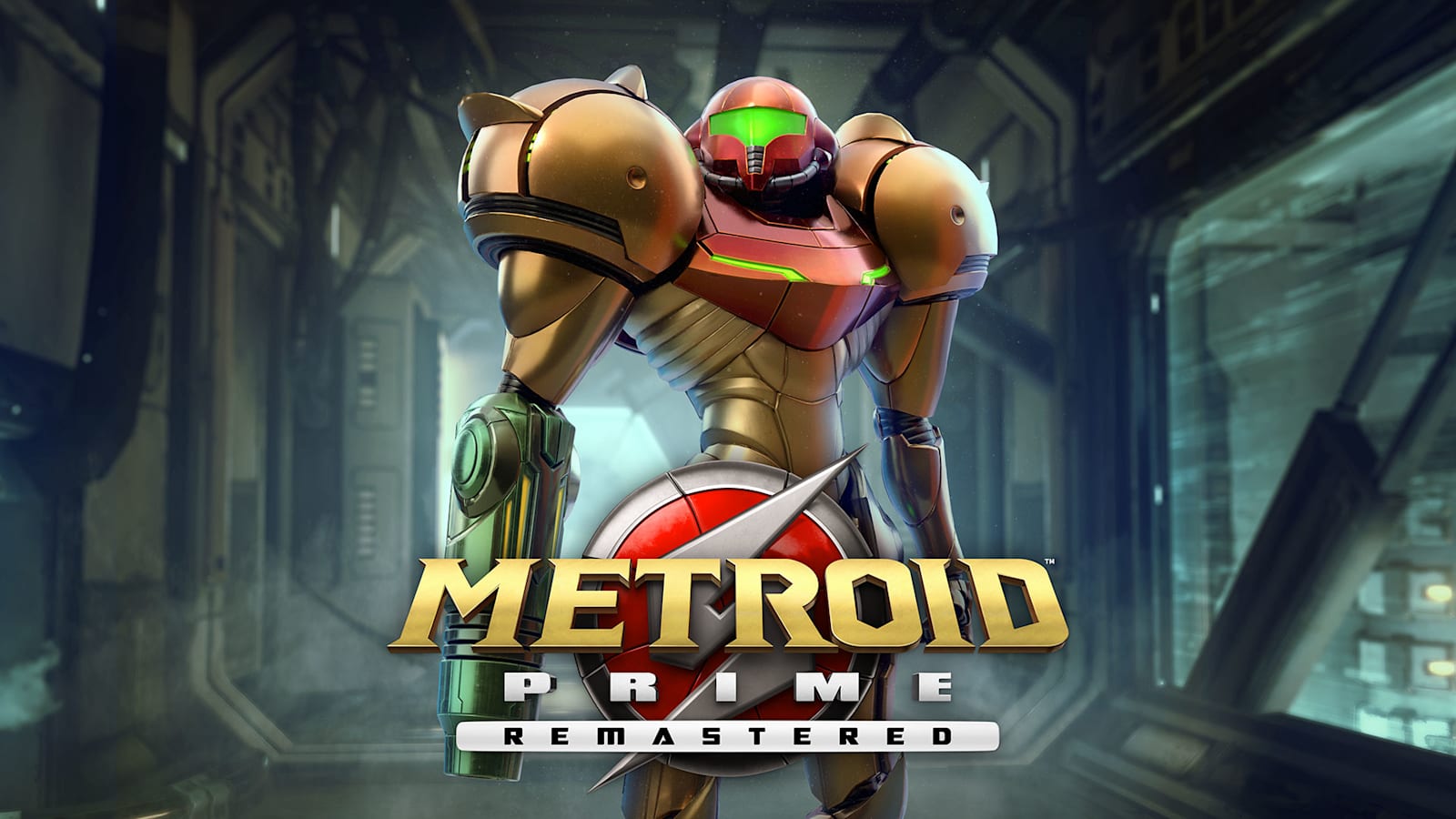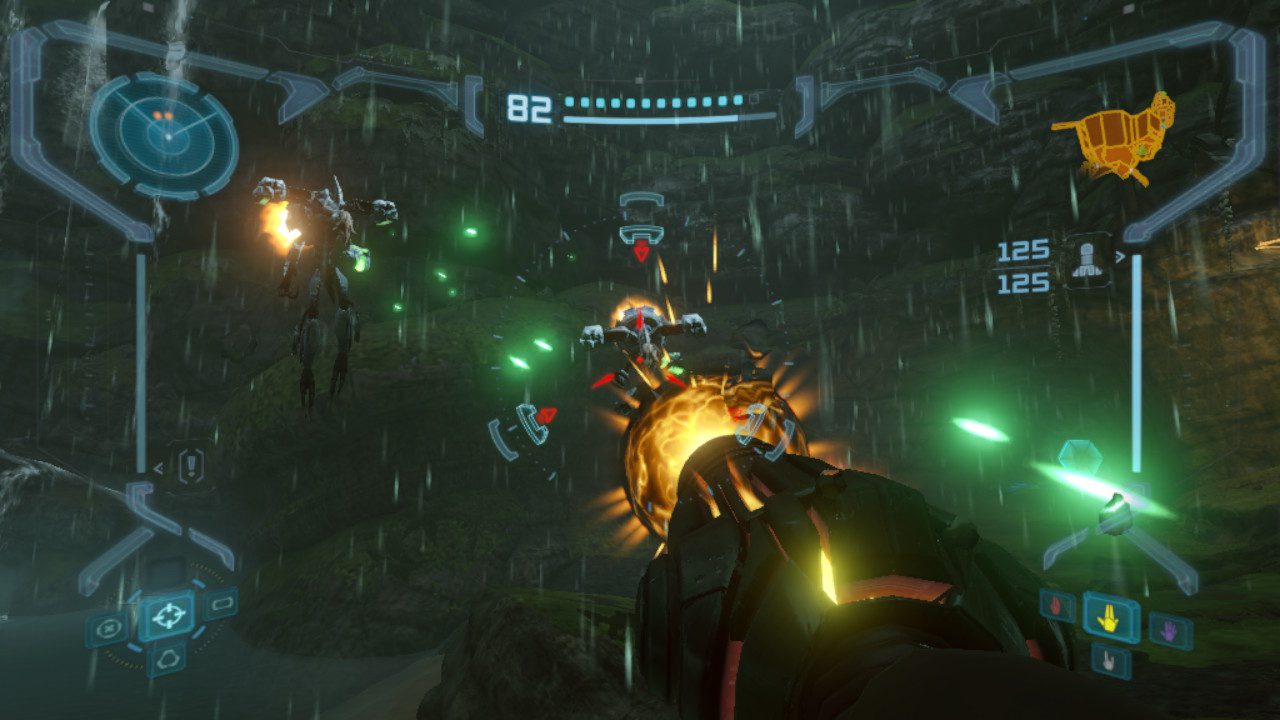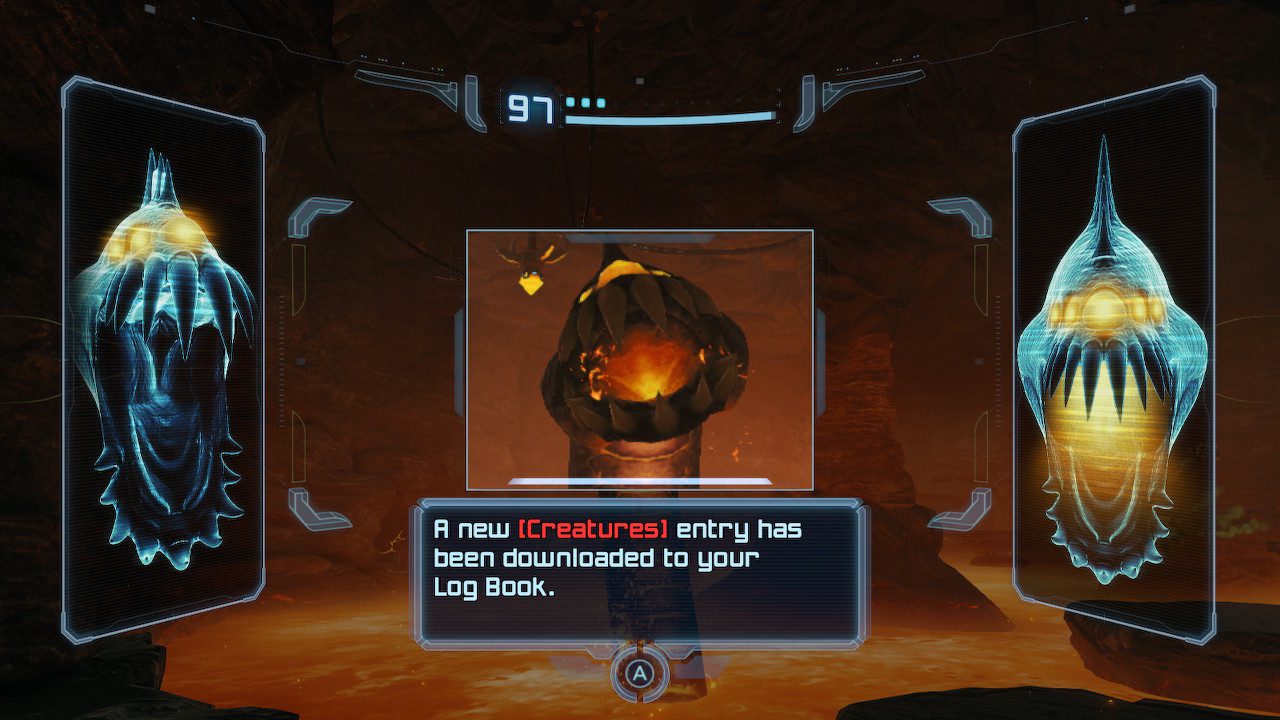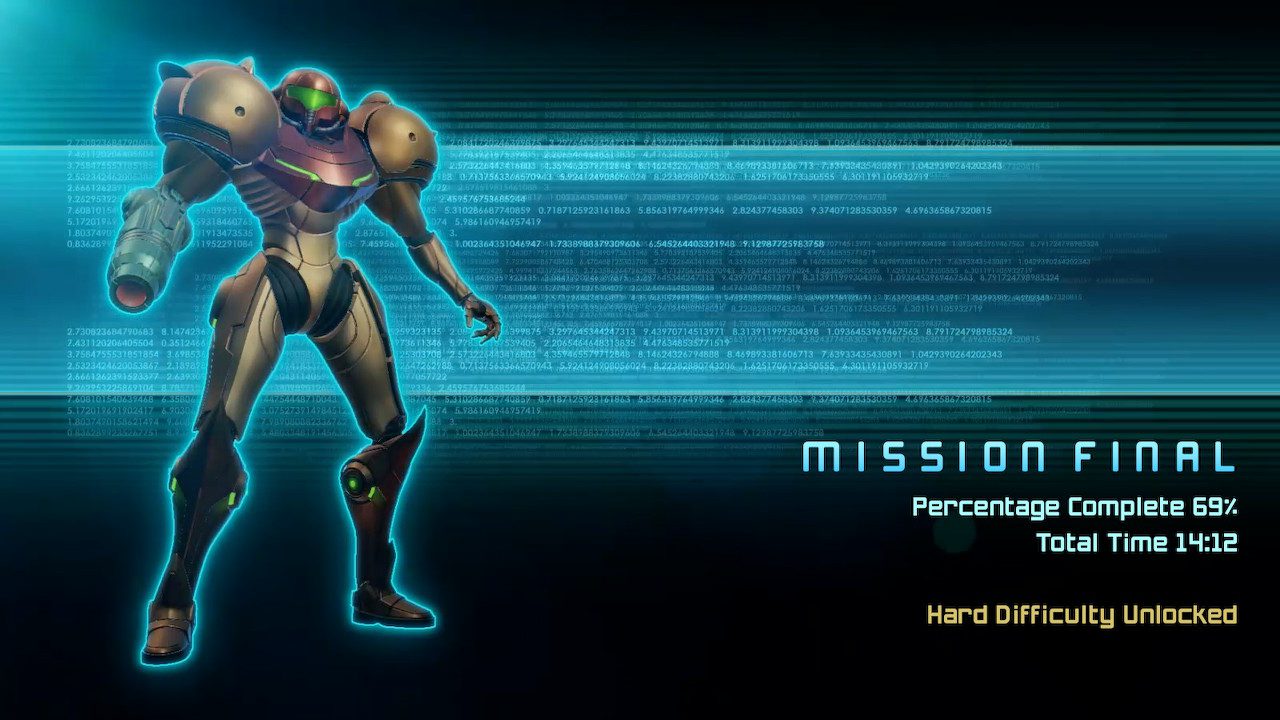
Disclaimer: Writer is an investor in Nintendo.
Until recently, I had never played a Metroid game (unless you count that attraction in Nintendo Land ). However, when Metroid Dread was announced and released in 2021, I picked it up only because I intended to review it, which I did. I enjoyed it far more than I had expected, and it’s actually only one of two games I’m aware of giving a perfect score, the other being Minecraft. I’ve been more interested in the series since then, and was happy to finally see the announcement that the long-rumored remake of Metroid Prime was in fact coming to the Switch – and would release on the very same day.
Sporting upgraded visuals and a lower price tag ($40), I figured it would be easy to take the plunge and see what the Prime series was all about. Doesn’t seem like Metroid Prime 4 is coming soon, anyway…
Setting/Story
Metroid Prime takes place after the original NES game as Samus sets foot on the planet Tallon IV, where Space Pirates have been carrying out biological experiments. Just like I said in my Metroid Dread review, it feels similar to Halo, even more so now that things are in 3D. Things are all around pretty quiet, with ambient music and the occasional enemy to carry you along. Tallon IV’s environments are varied, and filled with lore about the Chozo and their struggle with the ‘Great Poison’ that arrived on their planet. They are a wise species with religious traditions, and after scanning some of their totems, you set off to collect various artifacts. You’ll be exploring Chozo ruins, ice caves, and even Space Pirate bases.
Gameplay
If you’re familiar with Metroidvanias, you’ll probably feel at home here. The progression system is very similar to classic Metroid – Samus loses her abilities, and must regain them while exploring the environments. You even have to shoot open the doors as you venture through areas. As you regain your abilities, new areas become accessible, so a big part of the puzzle is figuring out where you need to go. This does mean you do a lot of backtracking, which I’ll admit gets a good bit annoying when you are having trouble figuring out what one part of the numerous areas you need to get to just so you can solve a simple puzzle. It’s definitely the game’s biggest flaw. I totally understand that these types of games work like this, but it was taken too far here.
The 3D map is quite helpful at least, with color coding to distinguish different types of doors that can only be unlocked with certain weapons. Additionally, a much-appreciated hint system is present, which will give you information about where you need to go next if you’ve been wandering around for a while. It’s on by default, and can be turned off if wanted, although for most people I’d say it’s actually best to keep on. It really doesn’t come up all that often, and chances are if it does appear you might be feeling frustrated at that point anyway.

When it comes to the aspects that make this different from the other Metroid games, it’s probably already pretty obvious that this plays as a first-person shooter. As it was originally designed to be played using the same control stick for aiming and moving, the lock-on system takes central focus here. Enemies often move quickly and are hard to shoot freely, so even though the new dual-stick and gyro control options make the game more comfortable to play, it doesn’t necessarily seem like the game’s become too easy. Granted, I haven’t played the original, but I died a fair share of times playing on normal mode. I do also want to point out that the options available are much more numerous than you would usually expect from a Nintendo game.
A couple examples:
– Instead of simple “camera sensitivity”, you can adjust the X and Y sensitivity for both gyro and each stick separately.
– Several colorblind options
– You can adjust the opacity of UI
– Multiple difficulty modes
What may be my favorite feature in Metroid Prime though is the various types of visors. There are a variety of them but you’ve got the best from the start – one that can scan the surrounding environment to get details on enemies and read Chozo or Space Pirate lore. It not only makes the experience much more interesting but also allows those who don’t care as much for the story to ignore it. I absolutely enjoyed scanning everything in the environment, even if it sometimes got me damaged as enemies wailed on me.

Graphics
It only takes a second after landing on the Tallon overworld to realize that this game is gorgeous. I’d heard it looked really good for the Gamecube, but I gotta say, the upgraded visuals in this version likewise make it stand out on Switch. Unlike many of Nintendo’s other remasters, they actually created new assets instead of just upscaling most things like we saw in The Legend of Zelda: Skyward Sword HD. The new environmental effects, particularly the rain and lighting, really do this game justice. Take a look at this comparison to get an idea of what I mean.

on the right I had Samus’ helmet set to not be viewable.
Pretty neat, right? I also don’t recount any instances of slowdown, which was the only way graphically that Metroid Dread faltered. Do note that this is still a Nintendo Switch game though, which means every so often you might see some models that are a bit too polygonal, or lines around characters that are a bit jagged compared to other modern-day experiences.
From a faith perspective (minor spoilers)
Skip to the end if you don’t want to hear about lore revealed partway through the game!
If you’re like me and love to scan the Chozo’s writings, you’ll soon learn that they have been doomed by what they call the “Great Poison”, which is pretty obviously the Phazon that is spreading throughout Tallon IV. Despite the many gifts they have been given, including their advanced technology that rivals the Space Pirates’, they know that they are not strong enough to successfully fight back against what has befallen them. For an unexplained reason, they believe a savior will one day come that will accomplish what they were unable to do and stop the growth of Phazon.
Yes, this is another one of those savior narratives that’s very common in movies and games, but I particularly like how it’s played out here. Unlike many other stories in which the victims are less focused on their own abilities and more concerned about the situation, the wiseness of the Chozo takes center stage. Just read the logbook entry “The Entrusted One.”
So many creatures suffer beneath the blight upon the land, and we Chozo are no exception. But for all of our pain, we can at least believe in the promise of the future. We have come to believe that a time may never come when we can once again open the door and banish the darkness we’ve contained. Even so, our vigilance will forever remain. We believe that on some far-off day, a savior will come and continue what we have begun. For that savior, we will leave our ancient weapons and armor–the soul who can gather them will be the Entrusted One, the only being who can reverse the evil that grows here.
What sticks out to me the most here is just how little concerned the Chozo are about their suffering. The entry mentions the pain of the other creatures first, almost as if their own is of less importance. They’ve accepted their situation, and instead of wallowing in despair or complaining about the spread of Phazon, they instead look towards the future, hopeful that one greater than them will finish the battle. This is exactly the attitude we need to have in our own lives.
Sometimes, we will encounter things in which we are powerless to stop them. There are many saints who fell sick with some disease or found themselves set to be martyred, but nonetheless looked towards the reward they knew they would earn. The Chozo’s calmness given their situation reminds me of them, and I think it’s an aspect of their culture worth imitating.
Conclusion
Metroid Prime Remastered is an experience that convinced me of Retro Studio’s talent. They took a Nintendo IP that had previously only known 2 dimensions and made its world truly epic. The remaster only makes the game even better, although some of its original flaws are still present. I might have spent up to half my play time of ~20 hours simply backtracking, which only got worse up until the very awesome ending. Nevertheless, at $40 it’s certainly an experience worth having if you enjoy Metroid. It can also act as a nice introduction to more mature titles since the gore is toned down compared to other space shooters like the Halo campaigns.

Scoring: 90%
Gameplay: 3.5/5 (Basic gameplay is great, but the backtracking is way too much)
Graphics: 5/5
Story: 5/5
Morality/Parental Warnings
Violence: You’ll be fighting a lot of gross aliens, and several of them will visibly spurt out blood or explode in pieces when killed, although usually green or blue. Some of these enemies are sentient, including ones that will suicide bomb you. Scanning environments will give base-level details about the space pirates’ experiments on both themselves and other species, which often results in death.
Magic/Occult: The Chozo were a religious race, and had Shaymins and other roles. Some of their ghosts appear, and will fight with you. You’ll be exploring several of their temples and collecting the Chozo’s artifacts. It’s kind of hard to decipher Chozo religion from the texts we do have, but it generally seems to regard nature/the universe as a higher power, and they discuss their harmonization with it.
